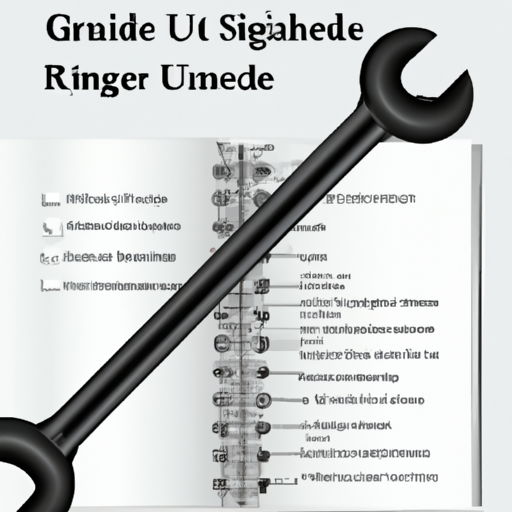The Ultimate Guide to Sucker Rod Wrench: A Must-Have Tool for Oil and Gas Industry

Introduction:
In the oil and gas industry, the extraction process requires intricate machinery and a wide range of specialized tools. One such essential tool is the sucker rod wrench, which plays a crucial role in maintaining and optimizing the production of oil and gas wells. This article aims to provide a comprehensive understanding of sucker rod wrenches, their types, uses, benefits, and the factors to consider when choosing the right one for your operations.
1. What is a Sucker Rod Wrench?
A sucker rod wrench is a heavy-duty tool designed to provide a secure grip on sucker rods, which are integral components of oil and gas wells. These rods, typically made of steel, connect the downhole pump to the surface pumping unit, enabling the extraction of oil or gas from the reservoir to the surface.
2. Types of Sucker Rod Wrenches:
a) Manual Sucker Rod Wrenches:
Manual sucker rod wrenches are hand-operated tools that require physical effort to tighten or loosen the sucker rods. They are available in various designs, including the crescent-shaped wrench, box-end wrench, and combination wrench. These wrenches are highly durable, easy to use, and suitable for smaller operations.
b) Hydraulic Sucker Rod Wrenches:
Hydraulic sucker rod wrenches utilize hydraulic power to provide a more efficient and effortless operation. They are capable of generating high torque, reducing the physical strain on the operator. Hydraulic wrenches are ideal for larger-scale operations and can be operated using a hydraulic power unit or a hydraulic torque wrench pump.
3. Uses and Benefits of Sucker Rod Wrenches:
a) Removal and Installation of Sucker Rods:
The primary use of sucker rod wrenches is to facilitate the removal and installation of sucker rods. These wrenches provide a secure grip on the rods, ensuring safe and efficient handling during operations. They allow operators to loosen or tighten the rods as required, enabling maintenance, repair, or replacement tasks.
b) Preventing Rod Failure:
Sucker rod wrenches play a crucial role in preventing rod failure by ensuring proper tension and torque on the rods. Over time, rods may experience wear and tear, leading to potential failures. Regular inspection and adjustment with a sucker rod wrench can help identify and rectify any issues, enhancing the overall lifespan and productivity of the rods.
c) Enhancing Operational Efficiency:
Efficiency is a key aspect of any oil and gas operation. Sucker rod wrenches enable quick and hassle-free rod removal or installation, reducing downtime and maximizing productivity. The use of hydraulic wrenches further enhances efficiency by providing high torque output, reducing the time and effort required for each operation.
d) Ensuring Worker Safety:
Handling sucker rods can be physically demanding and potentially hazardous. Sucker rod wrenches offer a secure grip, minimizing the risk of injuries caused by slippage or accidental release of the rods. By providing a controlled and stable environment, these wrenches enhance worker safety during maintenance or repair tasks.
4. Factors to Consider When Choosing a Sucker Rod Wrench:

a) Rod Size and Compatibility:
Sucker rods come in various sizes, so it is essential to choose a wrench that is compatible with the rod size used in your operations. Consider the range of rod sizes the wrench can accommodate to ensure versatility and efficient usage.
b) Durability and Quality:
Investing in a high-quality sucker rod wrench ensures long-term reliability and durability. Look for wrenches made from robust materials, such as hardened steel, to withstand the demanding conditions of the oil and gas industry.
c) Ergonomics and Operator Comfort:
Consider the design and ergonomics of the wrench to ensure operator comfort during extended periods of use. Features such as non-slip handles and adjustable settings can significantly enhance user experience and minimize fatigue.
d) Power Source (For Hydraulic Wrenches):
If considering a hydraulic sucker rod wrench, evaluate the available power sources. Choose between hydraulic power units or hydraulic torque wrench pumps according to your specific requirements and operational setup.
e) Maintenance and Serviceability:
Ensure that the chosen wrench is easy to maintain and service. Opt for wrenches with readily available spare parts and a manufacturer or supplier that provides reliable customer support.
Conclusion:
Sucker rod wrenches are indispensable tools in the oil and gas industry, enabling efficient and safe maintenance, repair, and installation of sucker rods. From manual wrenches to hydraulic variants, these tools provide the necessary torque and grip to handle the demanding tasks associated with sucker rods. By choosing the right wrench based on rod compatibility, durability, ergonomics, and power source, operators can optimize their operational efficiency, enhance worker safety, and prolong the lifespan of their sucker rods. Embrace the power of the sucker rod wrench, and let it become your trusted companion in the pursuit of successful oil and gas extraction.




 8613371530291
8613371530291